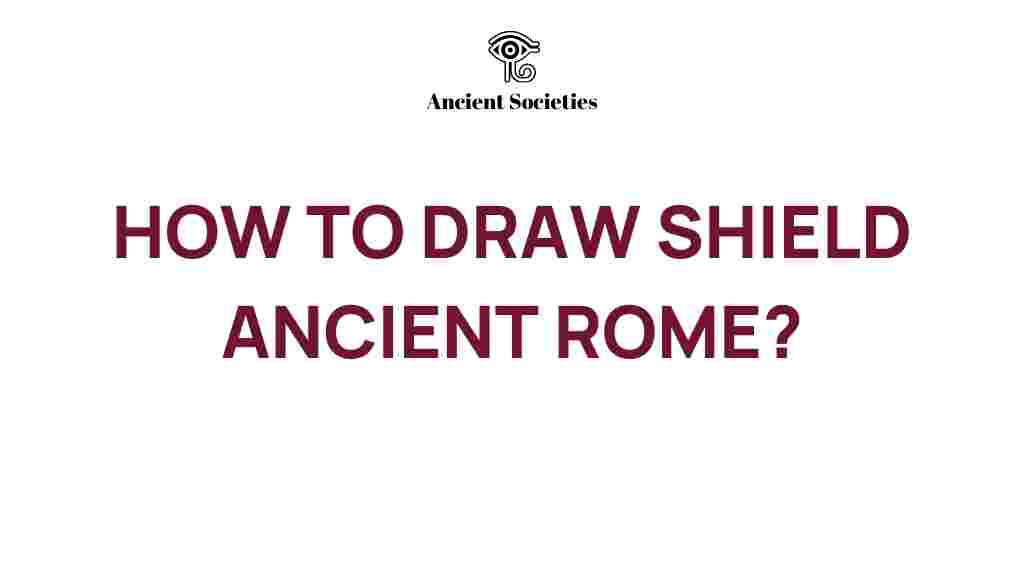Unlocking the Secrets of Ancient Roman Shield Design
Ancient Rome is renowned for its military prowess, and one of the key components of its success on the battlefield was the design of its shields. The craftsmanship involved in creating these historical artifacts not only reflects the artistry of the time but also offers insights into the practical aspects of warfare in Roman culture. This article will explore the intricate shield design of Ancient Rome, delving into its military history, the artistry involved, and its significance in the art of war.
Understanding Roman Military Shields
Shields in Ancient Rome were not just protective gear; they were symbols of power and pride. The design of Roman shields evolved over centuries, influenced by various factors, including:
- Military Tactics: Different formations and strategies required specific shield designs.
- Cultural Influences: Interactions with other cultures, such as the Greeks and Celts, shaped Roman craftsmanship.
- Technological Advances: Improvements in materials and construction techniques enhanced shield durability and effectiveness.
The Types of Roman Shields
Roman shields varied in shape, size, and material, each serving distinct purposes in military engagements. The primary types of shields used in Ancient Rome included:
- Scutum: A large, rectangular shield used by legionaries, designed for protection and to form a solid wall in battle.
- Parma: A smaller, round shield favored by light infantry and cavalry, allowing for greater mobility.
- Clipeus: A circular shield often adorned with elaborate designs, used in ceremonial contexts.
The Craftsmanship Behind Shield Design
The craftsmanship of Ancient Roman shields was a meticulous process that involved several steps. Artisans, often referred to as fabricae, were skilled in creating these military essentials.
Materials Used
Roman shields were primarily made from:
- Wood: The base material, typically layered for additional strength.
- Leather: Often used to cover the surface, providing durability and a degree of water resistance.
- Metal: Used for reinforcing edges and adding decorative elements.
Step-by-Step Shield Construction
The construction of a Roman shield involved several key steps:
- Frame Creation: Craftsmen cut and shaped wooden planks to form the shield’s structure.
- Layering: Multiple layers of wood were glued together for strength, sometimes with metal reinforcements.
- Covering: The exterior was covered with leather, dyed in various colors to signify different legions.
- Decoration: Shields were often painted with symbols, such as eagles or gods, to represent the soldier’s unit.
- Finishing Touches: Final polishing and the addition of any metal fittings were completed.
Archaeological Discoveries and Historical Artifacts
Archaeology has played a crucial role in uncovering the designs and uses of Roman shields. Excavations of battlefields and military sites have revealed numerous historical artifacts that provide insights into Roman military history.
Some notable discoveries include:
- Battlefield Finds: Shields found at sites like Cannae and Teutoburg Forest reveal the types of materials and designs used during significant battles.
- Decorative Shields: Shields recovered from tombs and ceremonial sites often feature intricate artwork, highlighting their cultural significance.
The Role of Shields in the Art of War
In the context of warfare, the design of Roman shields was crucial. The scutum, in particular, played a vital role in the famous testudo formation, where soldiers would align their shields to create a protective barrier against enemy projectiles.
Moreover, the psychological impact of shield design should not be underestimated. A well-decorated shield could boost troop morale and intimidate the enemy. The following aspects highlight the significance of shield design in military strategy:
- Protection: Shields provided essential defense against weapons and projectiles.
- Formation: The size and shape of shields allowed for effective formations during battle.
- Symbolism: Shields often carried insignia representing the legion, fostering loyalty and unity among soldiers.
Challenges and Troubleshooting in Shield Design
Despite their effectiveness, Roman shield design faced several challenges:
- Durability: Shields could suffer damage during combat, requiring repairs or replacements.
- Weight: Larger shields, while protective, could become cumbersome for soldiers.
- Weather Conditions: Wood and leather shields were susceptible to moisture, affecting their performance.
To address these challenges, Roman craftsmen continually refined their techniques, experimenting with materials and designs to enhance durability and functionality.
Conclusion
Unlocking the secrets of Ancient Roman shield design reveals a fascinating intersection of military history, craftsmanship, and cultural significance. The shields not only served as vital tools of warfare but also as expressions of Roman culture and artistry. The study of these historical artifacts continues to enrich our understanding of Ancient Rome and its enduring legacy in military strategy.
As we explore the rich tapestry of Roman military history, we find that the craftsmanship behind shield design exemplifies the ingenuity and skill of the Roman people. To learn more about the history of military artifacts, consider visiting reputable archaeology websites or museum collections dedicated to this captivating aspect of Ancient Rome.
This article is in the category Archaeology and created by AncientSocieties Team
